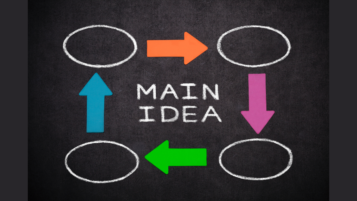Technical Writing
10 FrameMaker 9 Features I Like
© 2010 Ugur Akinci NOTE: To turn any toolbar on or off, select View > Toolbars from the main menu and then select the toolbar you want from the pop-up sub-menu. (1) HISTORY Panel. Press Ctrl + K or the History button on the Quick Access Toolbar to display the HISTORY of your past actions.…
Read MoreIs Humor too Humiliating for Technical Writing?
(Excerpts) Humor as a part of tone is relevant to how technical writers project their information to their intended audiences. Many technical writers and editors of technical writing believe humor to be an inappropriate expression in most forms of technical documents. Other writers and scientists have linked humor to human health and believe humor to…
Read MoreDrexel University Offers Master of Science Program in (Technical) Communication
Drexel University’s Master of Science in Communication prepares students for careers in a wide range of professional activities. The program specializes in three areas: technical communication, science communication, and public communication. Technical communication is for those seeking employment as technical writers, computer documentation specialists, and training specialists. Science communication has much to offer those who…
Read MoreMake Sure your Images Broadcast the Right Message about you & your business
A web site must reflect the correct image about you and your business with its design, color pallet, content, and also the IMAGES used. Sometimes I’m surprised how careless some web site owners are in the message they are broadcasting with the images they choose. Here is the web site of a writing service. I…
Read MoreTechnical Writing — End Your Sentences with What Matters the Most
© 2010 Ugur Akinci Readers remember what they read the last much better than what they read first. Thus try to end your sentences with things that really matter. Don’t end your sentences with matters of secondary importance. For example, here is a sentence from U.S. OSHA Technical Manual: “Workplace investigations of ventilation systems may…
Read MoreFrameMaker and TCS offer "Shared Review" of Technical Documents
Technical communicators now have a new workflow option to get their documents reviewed: “Shared Review” offered by Technical Communication Suite 2 (TCS2). Why “Shared Review”? To synchronize all review comments and use a single document for updating the reviews. Eliminating errors due to different reviewers not being aware of each other’s comments and/or the technical…
Read More6 New Services offered for Technical Communicators by Acrobat.com
© 2010 Ugur Akinci Most technical communicators are of course familiar with Adobe.com. But how many of us are aware of www.Acrobat.com and the services it offers? Registration for Acrobat.com is free and here are some of the ways in which you can take advantage of this new “cloud” site: (1) If you still have…
Read MoreHow to Subordinate Your Supporting Idea to the Main Idea
Introduction A supporting idea is a detail that supports the main idea. Generally, a supporting idea is an example of the main idea or an explanation of the main idea. In order to subordinate your supporting idea to the main point, you need to present it in a way that makes it clear that it…
Read MoreTechnical Writing – Combine Short Sentences to Avoid Choppy Delivery
© 2010 Ugur Akinci Most of the time you’ll hear that short is good in technical writing and long is bad. That’s true in general. But like everything else, this rule has an exception as well. If you write in too many short sentences cascading one after the other, the readers will have a hard…
Read MoreWrite Your Technical Documents with a Consistent Style Guideline
© 2010 Ugur Akinci A consistent technical document is one that instills confidence and trust in end-users. It all starts with a template. It doesn’t matter whether you are creating a book, help file, or a web site. A template is a must. Once you’ve got your template designed and under control, you need to…
Read More
